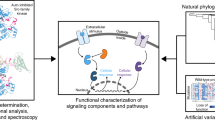Abstract
The five articles in this multi-author review in CMLS provide examples of multi-functionality of proteins belonging to several families. Distinct structural features of proteins suggesting multi-functionality are emphasized: intrinsically disordered elements that can “mold” themselves to fit various binding partners, as well as short linear motifs within larger proteins that perform particular functions. Although only a few protein families are discussed in detail, the conclusions apply to numerous, if not all, proteins. Multi-functionality of virtually every protein implies that the manipulation of its expression levels by over-expression, knockdown, or knockout affects every one of its functions, known and unknown, so that the results of these experiments must be interpreted with this complexity in mind. Particular functions in a multi-functional protein are often fulfilled by identifiable smaller elements that can be expressed separately. Identification of mono-functional elements of a multi-functional protein paves the way to the construction of novel precisely targeted molecular tools for selective manipulation of cellular signaling that can be used for mechanistic studies in cell biology, as well as for therapeutic purposes.
Similar content being viewed by others
References
Zanzoni A, Ribeiro DM, Brun C (2019) Understanding protein multifunctionality: from short linear motifs to cellular functions. Cell Mol Life Sci. https://doi.org/10.1007/s00018-019-03273-4
Fonin AV et al (2019) Multi-functionality of proteins involved in GPCR and G protein signaling: making sense of structure-function continuum with intrinsic disorder-based proteoforms. Cell Mol Life Sci. https://doi.org/10.1007/s00018-019-03276-1
Smrcka AV, Fisher I (2019) G-protein βγ subunits as multi-functional scaffolds and transducers in G-protein-coupled receptor signaling. Cell Mol Life Sci. https://doi.org/10.1007/s00018-019-03275-2
Penela P et al (2019) G protein-coupled receptor kinase 2 (GRK2) as a multifunctional signaling hub. Cell Mol Life Sci. https://doi.org/10.1007/s00018-019-03274-3
Gurevich VV, Gurevich EV (2019) Plethora of functions packed into 45 kDa arrestins: biological implications and possible therapeutic strategies. Cell Mol Life Sci. https://doi.org/10.1007/s00018-019-03272-5
Author information
Authors and Affiliations
Corresponding author
Additional information
Publisher's Note
Springer Nature remains neutral with regard to jurisdictional claims in published maps and institutional affiliations.
Rights and permissions
About this article
Cite this article
Gurevich, V.V. Protein multi-functionality: introduction. Cell. Mol. Life Sci. 76, 4405–4406 (2019). https://doi.org/10.1007/s00018-019-03271-6
Received:
Revised:
Accepted:
Published:
Issue Date:
DOI: https://doi.org/10.1007/s00018-019-03271-6




